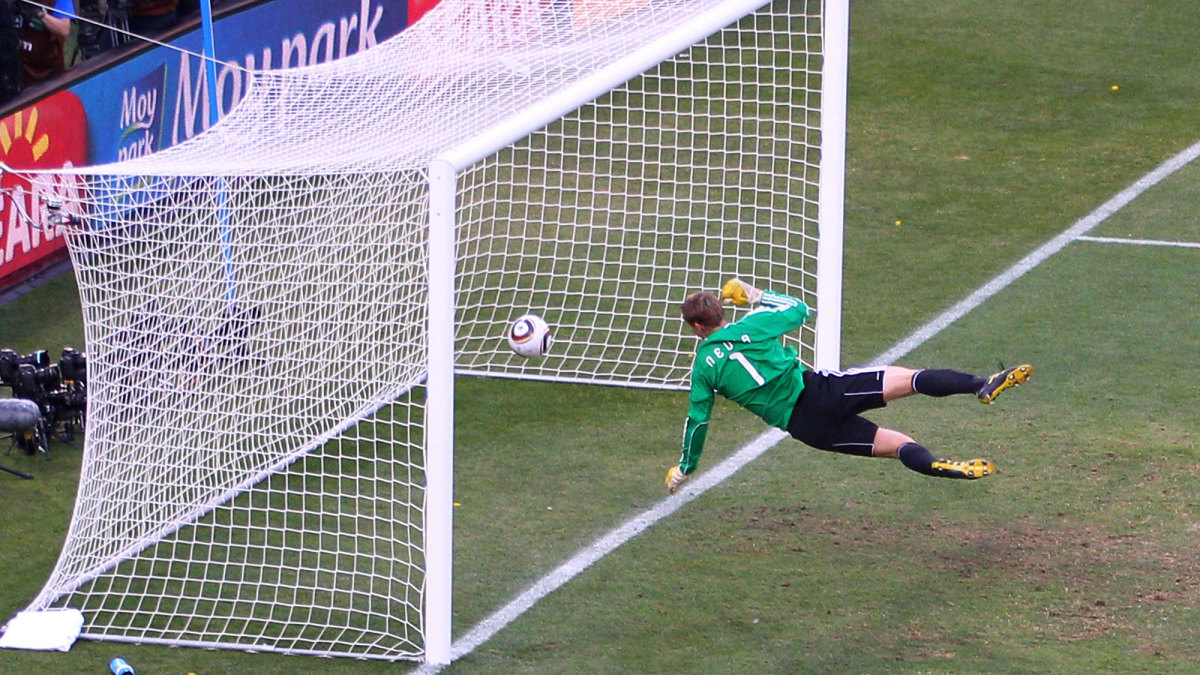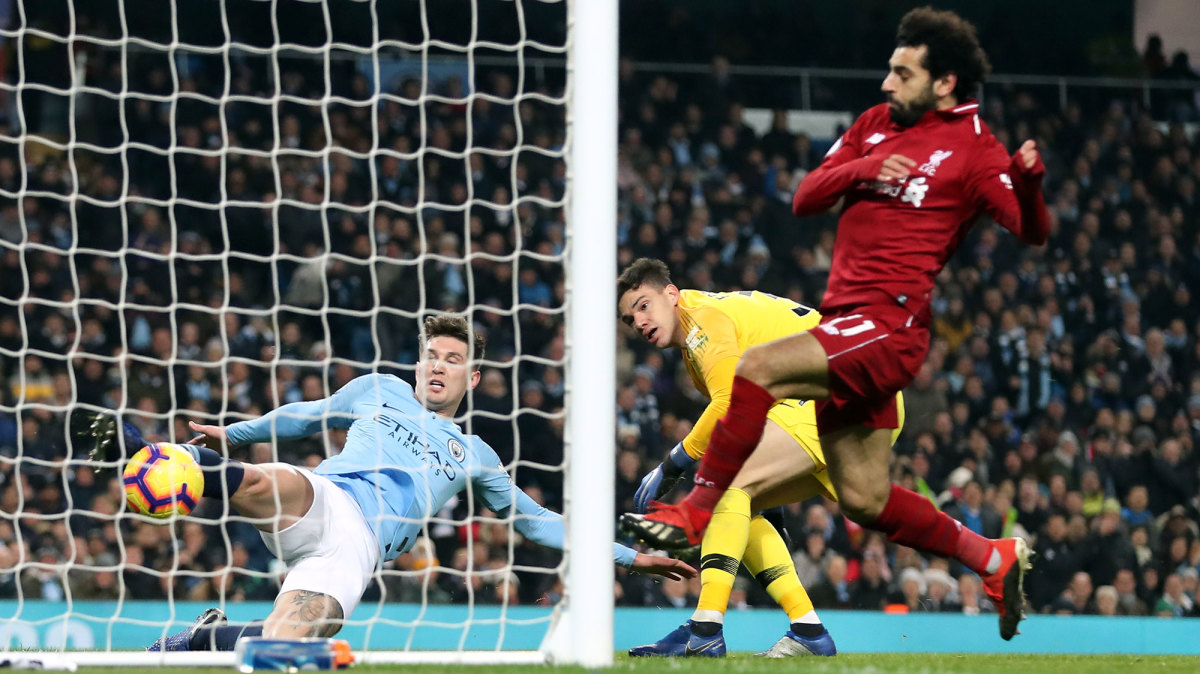Lampard's 2010 Ghost Goal and the Video Replay Revolution it Helped Inspire
This story is part of our series looking back on the 2010 World Cup and its biggest moments and themes with a decade's worth of perspective. For more, read about the lasting legacy of the competition in South Africa, and how France's debacle 10 years ago planted the seeds for eventual success in Russia.
Just outside the box, the ball broke from the tackle to Frank Lampard. It was just the sort of position in which he excelled, moving on to the ball within shooting range. Hit the ball early, catch the keeper before he was set; it was the classic Lampard M.O.
This, though, was the Jabulani, a terrible ball, one that could not be smashed with any certainty as to the outcome. So Lampard hit a sort of stiff-legged jab, a poke as the ball reached the top of its bounce. He caught it perfectly, with just enough topspin that it flew over the outstretched hand of Manuel Neuer and then dipped, just enough to clip the underside of the bar. It bounced down at least two, almost three feet over the line, up against the bar and down again into Neuer’s arms. England, it seemed, had implausibly drawn level at 2-2.
Except the Uruguayan officiating crew didn’t give it.
It’s usually possible to have sympathy with referees and their assistants. Even in the most controversial circumstances, you can normally understand why a decision may not have been given, to understand what doubt may have crept in, how a sightline may have been blocked, how in realtime everything happened so quickly that what became obvious on replays was unclear at first viewing. Not here. From 80 yards away in the press box it was clearly a goal. Trawl YouTube, and you’ll find that every television commentator, in every language, knew it was a goal before seeing a replay. There were no players in the way. It was simply a dreadful decision.

It would be easy to claim that England lost its way after that and, demoralized, lost 4-1 to bow out in the round of 16. The truth, rather, is that it had been outplayed by Germany from the start. Miroslav Klose had put Germany ahead after John Terry had misjudged a long clearance from Neuer, and then Lukas Podolski had rounded off a fine move to make it 2-0 after 32 minutes. When, five minutes later, Matthew Upson headed in a Steven Gerrard cross, it came as something of a surprise. Lampard’s strike came a minute later.
Who knows what might have happened had it stood. Perhaps Germany, stunned by the sudden, inexplicable disappearance of its lead, would have collapsed. As it was, England, enraged, upped the tempo, blew itself out and was picked apart in the second half. Lampard did hit the bar with a second-half free kick, but two goals on the counter from Thomas Muller settled the game.
The gulf in class was clear, and, for the most part, the English media reflected that. This was not like the goals Sol Campbell had had ruled out against Argentina in 1998 and Portugal in 2004. There was little anguished howling at the supposed unfairness of what were perfectly reasonable decisions. Rather there was a widespread acceptance that the better side had exposed England’s shortcomings and, at the same time–but almost coincidental to the result–there had been a monumentally awful refereeing decision.

Even worse, it was one that could have been rectified by a brief glance at a television screen. Within a matter of seconds, the watching world knew a dreadful error had been made and there was nothing that could be done about it. There was no equivocating: this was manifest.
Two years later, as UEFA president Michel Platini argued against goal-line technology and in favor of additional officials positioned next to the goals at Euro 2012, Marko Devic had a goal not given after it had crossed the line for Ukraine against England (although there had also been an unseen offside in the build-up). By 2012, goal-line technology was being used in the Club World Cup. It came into the Premier League in 2013-14 and was at the World Cup in 2014.
When asked that summer about the non-awarding of his goal four years earlier, Lampard took the high road.
"It changed the game for the better,” he said, “so I'm pleased about that. It's a positive move for the game as a whole with the introduction of goal-line technology."
By the World Cup that followed, FIFA had gone a stage further and fully embraced VAR. Lampard, as Chelsea manager, has been a notable critic. And of course there is a debate to be had–indeed a debate that is ongoing–about when and to what extent VAR should intervene.

Goal-line technology at least, though, seems to have been welcomed almost universally–even if it did end up costing Liverpool the league title by 11.7 millimeters last season, the distance the ball was from crossing the line before John Stones hooked it clear in Manchester City’s 2-1 win over Liverpool in January 2019. Yes, there’s a margin of error, but nobody could seriously doubt that the technology was far more likely to be accurate than an early middle-aged man jogging along 50 yards away, peering through a cluster of players.
The irony is that Lampard’s shot, the decisive nudge the authorities were given toward adoption of the technology, was so far over the line that it really shouldn’t have required technology to get the decision right at all.
